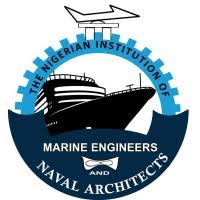Abstract

NIMENA 2025 Conference
Paper Presentation Guidelines
Call for Abstracts Guidelines
The Call for Papers is your first point of reference. Always adhere to the specific instructions provided by the conference organizers. While each conference has unique requirements, they generally seek submissions that:
- Address the conference theme and relevant topics.
- Present original, unpublished work.
- Demonstrate technical merit, innovation, and relevance to the maritime sector.
A. Key Information to Look For
- Submission Deadlines: Abstract submission, paper submission, and presentation material deadlines.
- Conference Theme & Topics: Your work must align with the specified themes (e.g., sustainability, digital twins, AI in shipping, alternative fuels).
- Submission Platform: The online system (e.g., EasyChair) for uploading your abstract and paper.
- Contact Information: For the program committee or conference secretariat.
Abstracts Submission Guidelines
The abstract is a crucial first step. It is a concise summary of your work and the basis on which your paper will be accepted or rejected. It should be a standalone document that clearly and persuasively communicates your research.
A. General Requirements (Font: Times New Roman)
- Word Count: Should not exceed 300 words.
- File Format: Submit as a Microsoft Word document (.doc or .docx).
- Language: The official language of the conference is English.
- Keywords: Provide keywords related to your topic note less than 5 keywords and not more than 8 keywords.
- Author Information:Include the full names, affiliations, and email addresses of all authors. Clearly identify the corresponding author and the presenter.
B. Abstract Structure (Font: Times New Roman)
A well-structured abstract should follow the "IMRaD" format (Introduction, Methods, Results, and Discussion) to provide a clear and logical flow:
- Problem Statement: State the problem or the rationale behind your work.
- Methods: Briefly describe the approach or methodology used.
- Key Results: Summarize the most significant findings.
- Maritime Implications: Explain how the results affect maritime safety, efficiency, or standards.
Full Paper Submission Guidelines
If your abstract is accepted, you will be invited to submit a full paper for peer review. This is where you provide the detailed research findings and analysis.
A. Formatting Guidelines (Font: Times New Roman)
- Template: A single-column template is often provided. You must use this template for consistency.
- Font and Spacing: Adhere to the template's specified font which Times New Roman and 1.5 spacing.
- Page Count: The paper should not exceed a specified maximum, typically 12 pages for single column.
- Images & Tables: All figures, graphs, and tables must be of high quality (300 dpi minimum) and properly captioned. They should be embedded within the text at the appropriate location.
B. Paper Structure (Font: Times New Roman)
A typical conference paper follows a standard academic structure, as shown in the provided template:
- Technical Paper Title: A concise and informative title.
- Authors & Affiliations: Include full names, affiliations, and emails for all authors.
- Abstract & Keywords: The same abstract submitted in the previous stage, followed by relevant keywords.
- Nomenclature: A list of all symbols and abbreviations used in the paper.
- Introduction: Provide maritime context, explain the research problem, and state your contributions.
- Literature Review: Discuss prior works and highlight the novelty of your research. Cite at least 15 quality sources.
- Methodology: Describe your research setup, including algorithms or experimental details.
- Results and Discussion: Present your findings and compare them to benchmarks or standards (e.g., IMO, DNV, ABS).
- Conclusion and Recommendations: Summarize your contributions and provide practical recommendations for marine practice.
- Acknowledgements: Acknowledge funding, collaborators, or other contributors.
- References: Use the specified citation style and ensure all sources cited in the text are included.
Presentation Guidelines
If your full paper is accepted, you will be scheduled to present your work. The goal is to convey your research effectively to a diverse audience, including academics, industry professionals, and policymakers.
A. Presentation Format & Time (Font: Times New Roman)
- Time Allowed:A 15 minutes ppt video presentation should be prepared and sent to the email [email protected], followed by 5 minutes for Q&A.
- Visual Aids: Use clear, compelling visuals (graphs, images, diagrams) instead of dense text. Avoid putting full paragraphs on your slides.
- Content:
- Title Slide: Title of the paper, your name, and affiliation.
- Introduction: Hook the audience and state the problem.
- Objectives: Clearly state what your research aimed to achieve.
- Methodology: Briefly explain your approach.
- Key Findings: Highlight the most important results.
- Implications: Discuss the significance of your findings.
- Conclusion & Future Work: Summarize and leave the audience with a lasting impression.
- Delivery: Practice your presentation to ensure you stay within the time limit. Speak clearly and confidently, and be prepared to answer questions. Also, the presentation should be a ppt video of 15 minutes.
Key Submission Deadlines
The conference is scheduled for November 28, 2025.
| Submission Item | Final Deadline |
|---|---|
| Full Manuscript Submission | November 21, 2025 |
| Presentation Video Submission | November 21, 2025 |
We look forward to your timely submission
